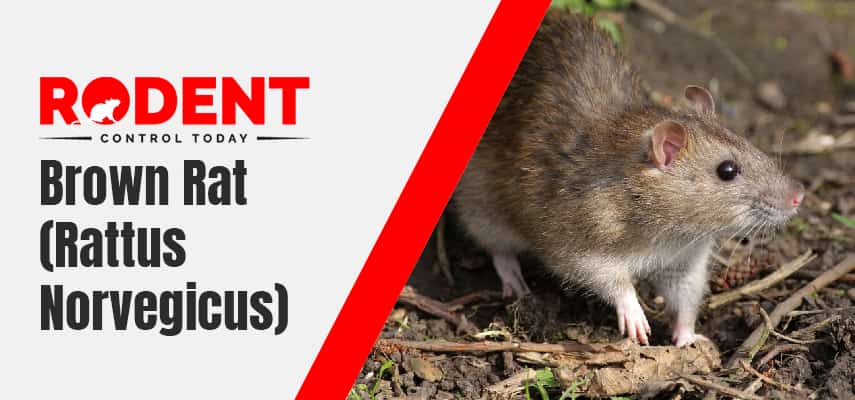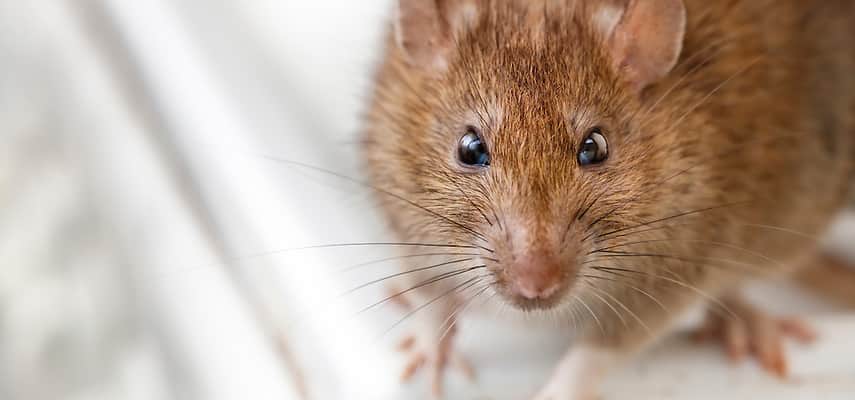Alternative Names And Introduction
The Brown rat is also known as the Common Rat, Sewer Rat, Hanover Rat, Norwegian Rat, Street Rat, Wharf Rat, Norway Rat and Parisian Rat. They originated in Northern China and other neighbouring areas but now it spreads to all continents of the world except Antarctica. They like the places where humans live.

Morphological Features
This rat is large in size and approximately twice in weight as the black rat and the house mouse. The inner part of their fur is light grey or brown but the outer part is brown or dark grey. Their head and body length range from 15 to 28 cm while the tail is very small and naked whose length is 10.5 to 24 cm. The adult is having a weight range of 140 to 500 gm. Their olfactory senses are highly developed and so they have acute hearing tendencies and are sensitive to ultrasound also. Brown rats have small eyes and so their vision is poor. They do not have a tendency to distinguish between colours.
Similar Species
Many members of the other rodent genera and families are similar to rats and share many characteristics with rats.
Roof rat or Black rat or Ship rat: Usually black or light brown in colour, slightly smaller than the brown rat and has a scraggly coat of black fur. Length of their tail is large and they also have large ears.
Marsh Oryzomys or Semiaquatic rodent or Marsh Rice Rat: They have large greyish-brown fur and greyish-white or cream-coloured belly and feet. The long slender tail is sparsely haired and brown from the above and white from the below. They have large eyes and well-haired ears.
Eastern Woodrat or Neotoma floridana: They have prominent ears, furry bicoloured tail, long thick fur, large eyes, very long distinct whiskers and are medium sized and length of the tail is half of the length of the body.
Hispid Cotton Rat or Sigmodon hispidus: This species of rat has long coarse fur which is a mixture of brown, tan, black and grey colour on the upper side and greyish or buff underside. Tail is shorter than the length of the body and is scaly, thinly furred.

Distribution And Habitat
Brown rats generally displaced the black rats in the areas where humans lived. They now changed their habitat from burrowing in wooden structures and thatched roofs to bricked and tiled buildings. Mostly found in underground tunnels, sewers, near food stores, buildings, garbage dumps, etc.
Diet
They are omnivorous in diet and so they eat almost everything from fruits, vegetables and cereals to fish, meat, milk and eggs. They also prey on various animals, even other rats and do not leave human garbage also.
Reproduction
They breed throughout the year and females produce up to 5-10 times a year. With a gestation period of 21-26 days, they reach sexual maturity in five weeks. Their maximum life span is 3 years.
Status In Australia
Brown rats are responsible for carrying a number of pathogens which are responsible for spreading a number of diseases. They cause huge damage to property and have the ability to protect themselves in every condition.
Fun Facts
- They can run at a top speed of 8 miles per hour and are excellent jumpers.
- A Male Brown rat is called a buck while a female is called a doe and their baby is called pup or kit.
Best Place To See Brown Rats In Australia
Mostly seen in feed stores and in dump areas and also near human habitat.
